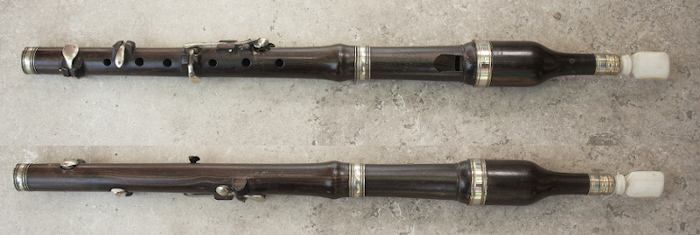PHILIPPE BOLTON
flageolets & recorders
A short history of the English Flageolet
The English flageolet probably appeared towards the end of the 18th century, following the decline of the recorder (English flute or common flute).
Some early English flageolets had 7 holes (6 in front and a thumbhole behind like the recorder), but little by little the 6 holed instrument without a thumbhole became the usual form,
high notes being played by simply blowing harder.
Like its French counterpart the instrument was progressively fitted with keys for making some notes easier to play.
The English flageolet could be considered as an instrument mainly for amateur musicians. Its fingerings are easier than those of the French flageolet, a diatonic scale
being obtained by simply opening the holes one after another. Note names were sometimes stamped beside the holes which could be separated by decorative studs to guide the player's fingers.
Unlike the French instrument, fingerings are the same in both octaves.
The instrument was usually tuned in D.
The windcap called the sponge chamber was smaller than that of the French flageolet. A sponge would usually have been placed there to absorb condensation from the player's breath.

An English flageolet by William Bainbridge (early 19th century) with a fairly short windcap,
note names stamped next to the holes and ivory studs to guide the player's fingers.
Bainbridge and some of his colleagues also made some double flageolets, with two parallel pipes mounted on the same windcap. The instrument below made by Bainbridge has an ingenious key system to prevent either of them from sounding to enable playing on one pipe alone.

A double flageolet made by Bainbridge

Front and back views of an anonymous English flageolet with no thumb hole, made around 1850.